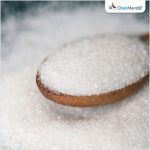Key Lessons
The sugar futures market in NY has recovered from the previous weeks’ drop and closed out this Friday at 19.69 cents per pound for March/2022, a 94-point high against the previous week, a little over 20 dollars per ton.
The American inflation is a sword over the head of the global economy. In November, the country had the highest inflation rate of the last 40 years: 6.8% in the twelve-month accumulated (December/2020 to November/2021), led especially by energy, which rose 33.3%, new vehicles, 11.1%, and apparel, 5.0%.
Here in Brazil, 75% of the financial institutions estimate that interest rates will get to 11.75% or more by the end of 2022. Interest rates on the rise, booming inflation, falling GDP and smaller buying power of households should strongly impact the consumption of food, beverages and fuels, just to mention the items that directly affect our sector.
To make the scenario even worse, the presidential election of 2022 will weaken the Brazilian currency due to the harmful trait of the two major candidates. That will make the decision-making process about the production mix at the mills and the timing to protect them even harder. I will explain later.
The increase in the production cost of sugar, ex-mill, has gone over 40% in a year, unimaginable level even for the most pessimistic executive. In December last year, so four months before the start of the current crop, the mills had already fixed about 70% of the volume of export sugar, whose average price had gotten to R$1,580 per FOB ton, a value which was considered profitable in view of the existing cost structure back then. In that month, the average dollar was R$5.1462 and Brent oil was trading at R$258.42 per barrel on average. From April to November this year, the average dollar has been R$5.3326 while the average Brent has reached R$395.00 per barrel.
In the hindsight, what could have been done? Well, in August/2020 we advised our clients – when the pricing percentage for this crop was under 25% – to fix prices in real, which then was showing R$1,522 per ton and, at the same time, buy a 14-cent call, at the cost of R$85 per ton (5.6% of the fixation value), or at least do 40% of the fixed volume. If they had opted for total insurance, this option closed out Friday at R$704.14 per ton, which would change the fixation to R$2,141 per ton. If they had opted for 40% only, the final fixed value would be R$1,770 per ton.
Due to the loss of opportunities for having fixed sugar before – as if someone had a crystal ball to know the future – and for not having covered some risks that seemed unlikely then, the response of the mills this year has been to decrease the pricing volume for the next crop. So much so that the number released by Archer Consulting in the week showed that the 2022/2023 crop is fixed by 47.6% up until the end of November, compared to 61.3% over the same period last year.
Going back to the mix issue – looking at the current scenario, everything shows that next year the mills should prioritize sugar production. This perception is totally different from the one we discussed here a few months ago. The expectation for global economy recovery, together with the strength shown by the oil market until then, anticipated higher gas prices that associated with a weak real against the dollar would raise hydrous price making it difficult for sugar to match profitability. So, it was obvious to assume that the mills would prioritize ethanol.
However, new elements have gotten into the equation: increasing inflation, a new coronavirus strain, interest rates on the rise, decreasing enthusiasm toward mobility (tourism, trips), less optimism toward global consumption, among other variants. The domestic hydrous market, which had hit R$3.8900, plummeted to R$3.3200 tax-free per liter. The mills were on alert.
Domestic sugar consumption is also skidding. Food and beverage industries are in no hurry to bring purchases forward or build stocks. They say consumption drops and “we are working from hand to mouth”, which in market jargon means buying raw material as demand for the final product goes on. The cost of carrying stock ends up having a huge impact with interest rates at 9.25% per year.
Lessons need to be learned, concepts need to be reviewed, the skill to tell what is cost and value needs to be practiced (some hedgers insist on not buying insurance because of the impact on the cash flow) and the total mastery of risk management needs to be strengthened. Next year will demand a lot more from the board of directors of the companies.
To read the previous episodes of World Sugar Market – Weekly Comment, click here
To get in touch with Mr. Arnaldo, write on arnaldo@archerconsulting.com.br












